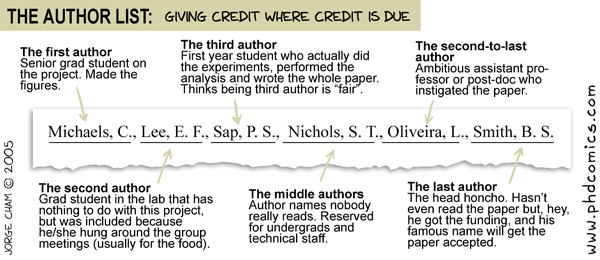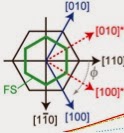He also gives the wise advice of clarifying the issue of co-authorship criteria and the senior persons track record on the issue before joining a research group.
Based on my limited and anecdotal experience, I fear these problems are more prevalent than is acknowledged, and they are getting worse.
I add a few other dimensions to this problem of inappropriate co-authorship.
First, senior people are not always the problem. Sometimes it is junior people who want to include honorary senior co-authors because they think that will "curry favour" with them or increase the chance of the paper being published in a better journal or of being cited.
Second, I have encountered the following two scenarios where junior people are included when they should not be.
"Lets put Susan's name on the paper. She did an undergraduate research project with us over the summer. It will look good for us if we can say we had an undergraduate involved in a paper".
"Peter has been a postdoc in the group for two years but has not produced a paper because he is working on a long term project, so lets put his name on this paper to help him out."Third, the relative amounts of time spent on the project leading to the paper is not the relevant criteria, but rather the level of intellectual contribution. For example, suppose an advisor suggests a project to a student and then meets with them for a half an hour every week for a year, often making crucial suggestions as to the next steps. The student spends forty hours a week on the project and writes the first draft of the paper which then goes through many revisions involving "red ink" from the advisor. In the end the relative time contribution of the advisor is something like 2 per cent. Yet I think co-authorship is fully justified.
Aside: Martin has articles Plagiarism struggles and When ghosts plagiarise that put the issue of student plagiarism in a broader social context, e.g., politicians and university administrators reading speeches and publishing articles that they did not write.
I welcome comments and encourage people to share their experiences.
















